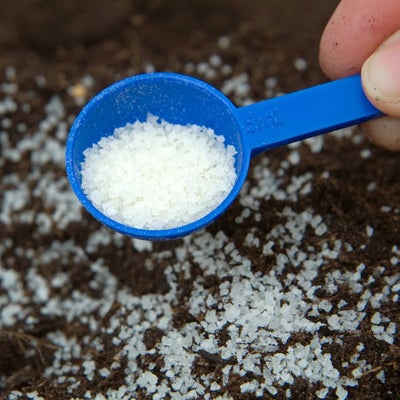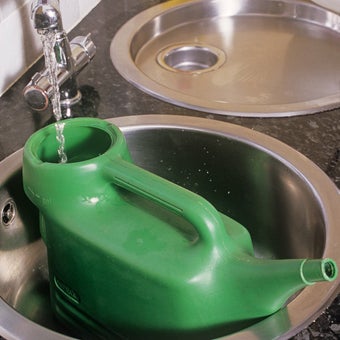
Quick facts
Natural and synthetic options are available. The composition or breakdown of synthetic options are currently not known, so we recommend you do not use these
Can be mixed with potting compost to improve water- and nutrient-holding capacity
Some products increases up to 400 times in size and weight when wet
Only use recommended amounts
Ensure it is stored as advised
Wash hands after use
Things to try before using water-retaining granules
- Use good-quality peat-free compost
- Grow suitable plants – use those with lower water needs in containers
- Don’t overwater – hanging baskets are often overwatered and this washes out and wastes water
- Add more organic matter such as homemade compost
- Add biochar – this natural option has great capacity to hold water and nutrients for when plants need. It also locks up carbon, making it a planet-friendly choice
What are water-retaining granules?
Water-retaining granules are sold for adding to potting . They store water so are claimed to help reduce how frequently you need to water.
The granules are polymers which can take up many times their weight in water and hold it until the surrounding soil becomes drier, when the water is released. Both natural and synthetic (plastic) options are available, and it is difficult for the buyer to know which is which. We don’t fully understand the composition or breakdown of synthetic options, so we don’t recommend these at this time.
Natural options that are currently available include products such as Twool Woolly Water Keeper and Ecofective Natural Water Storing Granules.

Should I use water-retaining granules?
Adding granules to the at the time of potting may initially reduce the amount of times you would need to water. In practice, plants in containers will grow to make use of all the available water by late summer and, from this point, it doesn’t much reduce how frequently a gardener needs to water.
The addition of granules does not replace the need for regular checking of container plants for watering needs, especially when the plants are growing strongly and during dry weather.
The environmental credentials of water-retaining granules are not fully understood. For greater sustainability we recommend cultural options as first port of call, then seeking natural-based products if granules are used.
How to use water-retaining granules for plant pots
Hanging baskets
Hanging baskets can be difficult to water, hold little potting and dry out quickly as they are often high up and exposed to the wind.
As always, start by choosing suitable plants and using a good-quality peat-free compost. Self-watering baskets, which contain a water reservoir in the base to help reduce the amount of watering needed, are a good choice.
We can also reduce the amount of watering in any case (hanging baskets are often overwatered), which will also preserve more of the within the basket, instead of nutrients being washed out of the compost.
Sustainable additives for hanging baskets include biochar and using more organic matter. As a last resort, water-retaining granules from a natural source can be added to the potting compost as the baskets are being made up.
Containers
Pots that are crammed with plants or have fast-growing plants in them such as annual climbers will have a high water demand. The first consideration is to use a suitably large pot and a good quality peat-free compost or soil that is able to hold enough water. Place a saucer underneath a container and water slowly so that water does not quickly drain away.
As a last resort, water-retaining granules can be added when re-potting or planting up a new container. However, better options are also available for keeping containers hydrated, including self-watering pots and micro-irrigation.
Plants in the ground
Applying organic material such as homemade garden compost is more effective than adding water-retaining granules to the soil.
Points to note if using water-retaining granules
- Follow the instructions on the packet. Granules will swell to a considerably bigger size when wet compared to dry, so do not to exceed the rate of application when adding them to potting composts. An excess amount may push the plants up and out of their containers
- Incorporate granules into the potting compost – don’t put them on the top
- Some products have feed added to them and there is now potting compost with granules already added
- Ensure the packages are stored cool, dry and out of the sunlight
- Water-retaining granules are potentially harmful so always wash your hands after handling. Keep out of the reach of children
Disposal of water-retaining granules
There are two groups of water-retaining granules: natural-based and synthetic.
- Natural options break down over time into natural components and are suitable for
- Synthetic options are plastic-based and break down into microplastics; small plastic-based compounds that persist for an unclear period of time. It is not fully understood how these break down in the environment, so we don’t recommend these options. To dispose of these granules, they can be added to general municipal waste






